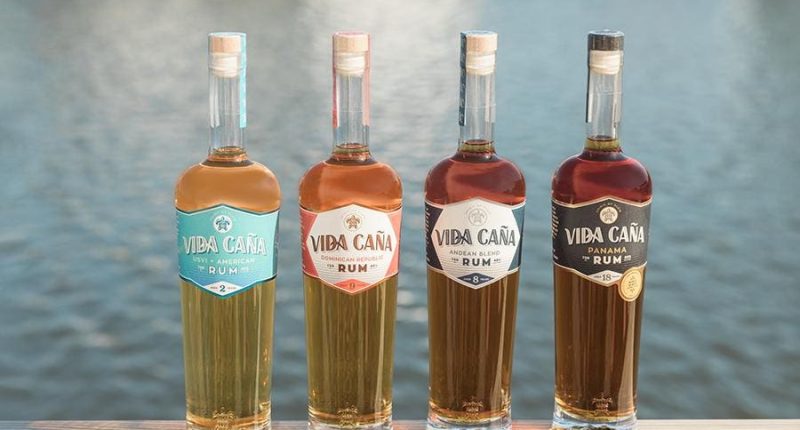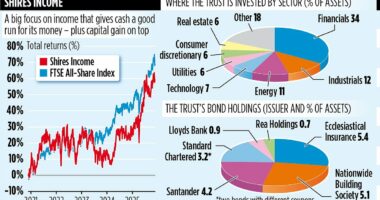Share this @internewscast.com
The core lineup of rums from Vida Caña.
Vida Caña Rum
Not many rum brands begin with a handshake on a beach or a business plan scribbled between surf sessions. But then again, not many rum brands are Vida Caña.
Born from a friendship forged in transportation logistics and fueled by surf trips and a shared love of rum, Vida Caña is the brainchild of Bryan Tierce and Jonathan Fuller. After years spent building and eventually selling their logistics company, the duo decided their next chapter wouldn’t be about chasing shipments—it would be about chasing fulfillment.
“When we exited the business, we told ourselves the next thing we do has to be fun,” Fuller told me during a recent conversation. That “fun” took the shape of rum, something both had grown to appreciate during frequent travels through Central and South America and the Caribbean for work. Rum was always part of the moment, whether it was beachside cocktails or post-surf relaxation, since they always took their boards with them.
Tierce, who had spent a decade in the spirits world before diving into logistics, was initially hesitant. “I’d seen how tough this industry can be,” he said. “But I also knew if I ever came back, I wanted to be on the ownership side, building something I believed in.”
Bryan Tierce and Jonathan Fuller, the co-founders of Vida Caña Rum.
Rachel Benavides
What followed was a slow burn—five years of research, education, and exploration. They enrolled in Moonshine University and The Rum University in 2015. They tasted, tested, and built relationships with producers around the world. And they made a key decision early on: they wouldn’t distill. “It didn’t make sense for us to invest millions in a distillery just to be locked into one style, one region,” Tierce explained. “We wanted the flexibility to find amazing rums and tell their stories through blending and finishing.”
Vida Caña officially launched in late 2019 on the Gulf Coast, where both founders are based. The timing wasn’t ideal—just months later, the pandemic brought the beverage industry to a crawl. But they leaned into the pause, refining their processes and growing organically. “We didn’t want to get ahead of ourselves,” Tierce said. “We made our early mistakes at home, with friends, family, and people who understood what we were trying to do.”
At the heart of Vida Caña are four core rums, each sourced from different rum-producing regions and chosen for their distinct profiles. The lineup spans Central American, South American, Caribbean, and Caribbean-American blends, designed to suit everything from vibrant cocktails to contemplative sipping. “We even color-coded the labels to evoke the time of day we imagine each rum being enjoyed,” Tierce said. “From bright skies to late nights.”
Their two-year expression is a workhorse built for mixing. It is bottled at 92 proof to stand up in tropical cocktails without disappearing behind fruit juice. The eight- and nine-year-old expressions—true age statements, not marketing fluff—offer deeper complexity. “We spent a lot of time dialing in the flavor,” Fuller said. “We’d sit at the kitchen table blending and proofing, figuring out what worked.”
But where Vida Caña has really found its creative groove is in its Single Barrel Finishing Series, a program that started more or less by accident. A friend offered them a used Four Roses bourbon barrel early in their startup, and they decided to finish their 18-year Panamanian rum in it. Sixteen months later, they bottled it—and it disappeared from shelves almost instantly. “That was the spark,” Tierce said. “Retailers started calling and asking, ‘Can you do that again?'”
The award-winning Vida Caña 18-month-aged Panama Rum.
Vida Caña Rum
In the years since, the program has expanded from one barrel to 18. Along the way, they’ve begun collaborating with other craft distilleries, producing co-branded barrel releases that tell dual stories—of the rum and the barrel that shaped it. They’ve worked with names like OKI Bourbon, Dettling Bourbon, Rebecca Creek, and Fierce Whiskers, with more in the pipeline.
Their most unusual finish so far? A Don Julio Reposado tequila barrel. “It added this layer of agave character that really threw people,” Tierce said, laughing. “We’d pour it and get this pause, and then folks would say ‘I don’t know what I’m tasting, but I like it.’ That’s what we’re after.”
For 2024, all the Single Barrel finishes were released at cask strength—roughly 65% ABV—to give consumers the full, unfiltered experience. “We’re learning,” Tierce said. “Some might get proofed down eventually, depending on how they develop. But we like giving people the raw version first.” They obviously did something right; their Single Barrel Finishing Series Panama 18 Year Rum Finished in a Bourbon Barrel was named Best in Class: Overproof Rum at the 2024 San Francisco World Spirits Competition.
What sets Vida Caña apart isn’t just the blending or the finishes—it’s the intention behind it all. They’ve self-funded the business from day one, and every bottle sold includes a donation to local nonprofits. They’ve expanded from supporting one organization to four and are always looking to grow that impact.
“We’re building something we’re proud of,” Fuller told me. “This started as a passion project, but it’s become a purpose-driven one too.”
They don’t have a flashy tasting room—at least not yet. Instead, they operate under the license of Aerodrome Distilling in Corpus Christi, Texas, which gives them the space and compliance they need to finish barrels and experiment. Some of their limited releases are available there, but you won’t see a big Vida Caña sign. That’s intentional.
“We’re still figuring out what a Vida Caña tasting room would even look like,” Tierce said. “But right now, we’re more focused on doing the work, making good rum, and growing the right way.”
For two guys who used to move freight across borders, they’ve found a very different kind of fulfillment—one that comes in a bottle, aged in oak, and meant to be sipped slowly. You can find their rum in Texas, Florida, and Utah for now, or on their website, where they ship to 47 states.
Follow here for the most up to date information about the ever changing beer, wine, and spirits industry.
MORE FROM FORBES












